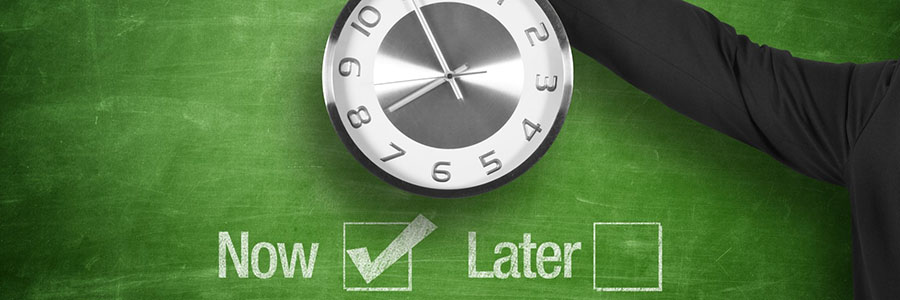
Grades K-2
Happy EconEdMonth! Celebrate economics all month long by visiting EconEdMonth.org

Don't have an account yet? Sign up for free
Don't have an account yet? Sign up for free


COMPELLING QUESTION: Why do people tend to procrastinate when it comes to doing things that are good for them?
Students observe a “mind” that tries to decide whether to exercise or not. They see how discounting can change a person’s intended choices and actual choices. Students learn how present bias can lead to procrastination. After the activity, students apply what they have learned and measure their own level of discounting. Finally, students discuss ways to overcome present bias and procrastination when making important financial decisions like saving for retirement.
The value people place on costs and benefits that occur in the future is lower than if the costs and benefits are incurred today. To compare future values to present ones, economists discount anything occurring in the future. The more impatient a person is, the more the future values must be discounted. One problem people have is that they are too impatient and therefore tend to choose options in which benefits are received today and costs are pushed off into the future. This tendency to procrastinate can cause problems when people must make decisions about things that have future benefits but involve current costs, such as saving for retirement, going to the dentist, or studying for an exam.
Another outcome that behavioral economists have observed is that people sometimes make inconsistent choices. For example, a student might decide to go to a party tonight and promise to study for an important exam tomorrow night, but then when tomorrow night comes, the student decides to go to another party instead of studying as planned.
Present bias is a term used to explain the behavior in which intended and actual choices change over time and result in procrastination that continues until no more procrastination is possible. Present bias implies that the rate at which something is discounted from the present to the immediate future is higher than between two future periods. This implies that when a cost is incurred to receive a future benefit, a person is more likely to judge the discounted benefit higher than the discounted cost when both occur in the future. However, when the time comes to incur the cost, their undiscounted value compares poorly to the future benefit, representing the present bias that people can exhibit.
https://www.ignitermedia.com/products/7227-the-marshmallow-test?utm_campaign=legacy_product_redirect (video on ignitermedia.com)
The Marshmallow Test (video on youtube.com)
https://www.telegraph.co.uk/news/features/11117560/The-marshmallow-test-Stanford-University-experiment-that-claims-to-predict-a-childs-future-successes.html (video on telegraph.co.uk)
SOURCES
Kahneman, Daniel. 2011. Thinking, Fast and Slow. New York: Farrar, Straus and Giroux.
Read, D., Loewenstein, G., and S. Kalyanaraman. 1999. “Mixing Virtue and Vice: Combining the Immediacy Effect and the Diversification Heuristic,” Journal of Behavioral Decision Making, 12: 257-273.
Ruth Helman, Craig Copeland, and Jack VanDerhei, “The 2015 Retirement Confidence Survey: Having a Retirement Savings Plan a Key Factor in Americans’ Retirement Confidence,” EBRI Issue Brief, no. 413 (Employee Benefit Research Institute, April 2015).
Thaler, Richard H. 2015. Misbehaving. W. W. Norton and Company. Pg. 318.
Not available for this lesson.
Multiple Choice
1. A particularly impatient person discounts things in the future by ½ for every year in the future they occur. In addition, anything in the future is given an extra discount of ½ no matter when in the future it happens. Suppose the person is offered a chance to invest $100 today to earn $640 in two years. The person ________________ invest today. The person ______________ agree today to begin investing a year from now. The person ___________ invest when a year has passed.
a. will not, will not, will not
b. will, will, will
c. will not, will, will not?
d, will not, will, will
Constructed Response / Activity

Grades K-2

Grades K-2, 3-5

Grades 9-12

Grades 9-12
